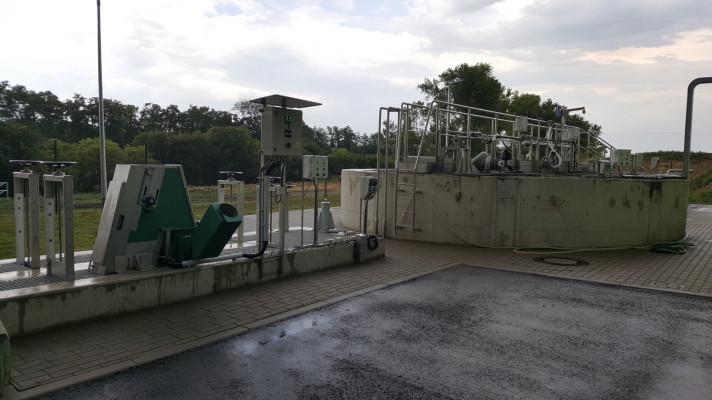Best technologies for treating bad smells from wastewater identified
A new study has compared treatments to reduce odour from wastewater treatment plants, and has suggested that biotrickling filtration and activated sludge diffusion are the two most promising technologies. These appear to perform best on a combination of environmental, economic and social indicators.
Odour pollution is a threat not just to human health and welfare, but also to air quality, as it contributes to photochemical smog formation and particulate secondary contaminant emissions. Odour from wastewater treatment plants (WWTPs) is caused by emissions, such as volatile organic compounds (VOCs) and sulphur compounds. It has traditionally been a low priority, but its importance has been increasing with more stringent environmental legislation, such as the EU Water Framework Directive1, and the spread of residential areas closer to WWTPs.
There are two main types of technologies to treat odour: physical/chemical and biological. Physical/chemical technologies remove bad-smelling emissions by changing them with chemicals (chemical scrubbers), burning (incinerators) and by adsorbing the emissions with carbon. Biological technologies remove emissions using filter systems, made partially or completely from organic materials (biofilters), that pass the emissions upwards whilst simultaneously trickling a cleansing solution downwards (biotrickling filters). Other biological technologies aerate the sludge or sewage with fine bubbles (activated sludge diffusion).
The study compared a range of physical/chemical and biological technologies that treated odour emissions from WWTPs. It evaluated their environmental, economic and social performance. Environmentally, it examined the use of materials, energy, land and water. Biofiltration and active carbon filtration require the most materials. Incineration requires the most energy (1174 Megajoules per m3 of treated gas per hour) because it uses natural gas. Biofiltration uses the largest amount of land, with a footprint seven times greater than that of biotrickling filters and 25 times that of chemical scrubbers. However, biotrickling filters have the highest water consumption at 0.052 litres per m3 of treated gas per hour.
The study considered environmental impacts in terms of human health, ozone depletion and global warming. Unsurprisingly, the fossil fuel required for incineration meant that it has the greatest impact on global warming. Activated sludge diffusion, chemical scrubbing and biofiltration trickling had the most negative impacts on health and ozone, because they have a low efficiency at removing VOCs, although they are efficient at removing other odours.
The economic performance is more difficult to assess because manufacturers are reluctant to provide economic data. However, the study considered 'net present value' of the technologies, i.e. their investment and operating costs. This indicated that active carbon filtration was the most expensive technology, at about EUR1.7 million (assuming it treats 5000 m3 of odorous emissions per hour that contain 20.9 mg of hydrogen sulphide per m3, and has a 20-year useful lifespan). The biotrickling filter was the least expensive at about EUR0.7 million.
Social impacts were also difficult to quantify. The study indicates that incineration and a hybrid of biotrickling and active carbon filtration are most effective at preventing odour. This reduces negative effects for local residents, such as insomnia, headaches and appetite loss. When considering health and safety, previous research indicates that physical/chemical treatments are more dangerous to work with than biological technologies.
On the basis of their high efficiency at reducing odour and low environmental impact, activated sludge diffusion and biotrickling filtration appear to be the most promising technologies. The high water consumption of biotrickling filters could be reduced by using effluent or recycled water.
Contact: mutora@iq.uva.es
